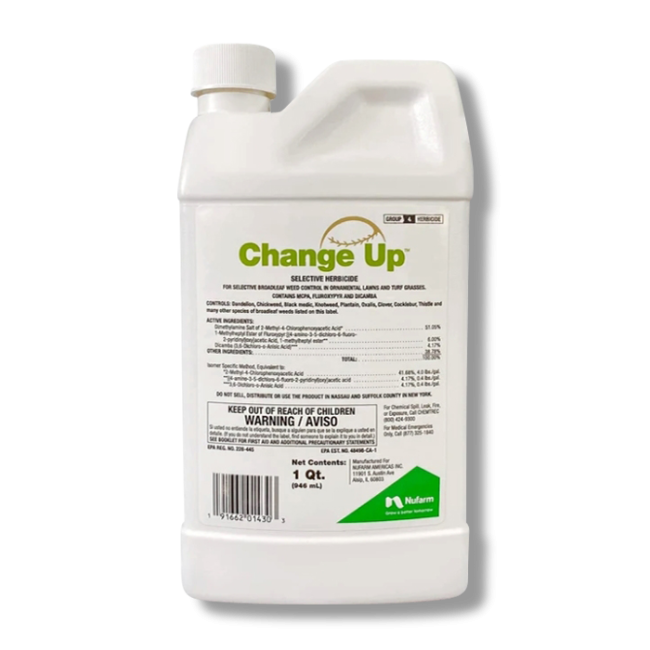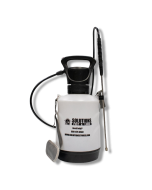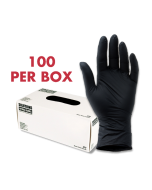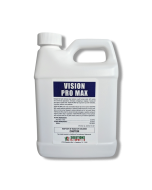Gain access to personalized product screening, the best pricing, rewards, and more!



application2
Change Up Selective Herbicide
11/04/25
Change Up Selective Herbicide, manufactured by Nufarm, is a cutting-edge herbicidal solution designed for use in both cool- and warm-season turf. This herbicide is versatile and ideal for tackling a wide range of problematic broadleaf weeds, including turf that may be sensitive to the use of 2,4-D on the property.
Combining the potent active ingredients MCPA, fluroxypyr, and dicamba, Change Up Selective Herbicide offers a triple-action approach to effectively and selectively eliminating more than 200 broadleaf weeds, including dandelion, plantain, oxalis, chickweed, thistles, and other hard-to-control species, from treatment areas.
Change Up Selective Herbicide is known for its quick action, which reduces callbacks. It is an excellent alternative for properties where the use of 2,4-D is a concern.
Tools Needed
Change Up Selective Herbicide can be applied using various methods such as a pump sprayer, backpack sprayer, or spray rig for larger applications.
How to Use
- Step 1: Determine how much Change Up Selective Herbicide to use by measuring the square footage of the treatment area. Find the square footage by measuring the length and width in feet, then multiplying them together (length X width = square footage). For acreage, take the square footage and divide it by one acre (square footage / 43,560 sq. ft. = acre). For ornamental lawns and turf containing bluegrass, ryegrass, and fescue, apply 2 to 3 pints in 240 gallons of water per acre. For creeping bentgrass, use 1.25 pints of product in 20 gallons of water per acre. For common and hybrid bermudagrass, bahiagrass, carpetgrass, centipedegrass, and zoysiagrass, apply 1.5 to 2.5 pints in 240 gallons of water per acre. For St. Augustinegrass apply 1.0 pint of product in 175 gallons of water per acre. Make broadcast applications of 1.25 to 3 pints per acre in 20 to 240 gallons of water per acre (or spot treatment application of 0.46 to 1.10 fl. oz. in 0.5 to 5.5 gallons of water per 1,000 square feet) to control weeds growing in turf grasses. For non-crop areas, mix at a rate of 2 to 3 pints of product in 50 to 300 gallons of water per acre.
- Step 2: In a large container, add half of the required amount of water and then the appropriate amount of Change Up Selective Herbicide. Fill the container the rest of the way with the remaining half of the water. Mix well and then pour into the sprayer tank.
- Step 3: Apply Change Up Selective Herbicide over the treatment area. Refer to the label for reapplication intervals. Follow-up applications may be required for dense infestations of perennial and biennial weeds.
Where to Use
Change Up Selective Herbicide is for selective broadleaf weed control on Golf course turf (fairways, aprons, roughs, and tees, excluding bentgrass tees), Ornamental turf lawns(residential, institutional, and industrial, Parks, cemeteries and athletic fields, Roadsides (including aprons and guardrails), rights-of-way, and other similar non-crop areas, and Sod farms.
When to Use
Apply Change Up Selective Herbicide to broadleaf weeds that are actively growing. Avoid applying during excessively hot or dry periods (when air temperature exceeds 90 degrees Fahrenheit). Turf should not be mowed 1-2 days before and following application. Reseed no sooner than 3-4 weeks after application of this product.
Safety Information
Change Up Selective Herbicide is safe to use around children and pets when applied according to the product label instructions. Always wear the proper personnel protective equipment (PPE) when mixing and applying this product.
Keep all people and pets off the treated areas until 48 hours have passed after application.
Special Considerations
Adding oil, a wetting agent, or another surfactant to the spray may increase its effectiveness against weeds, but doing so may reduce selectivity for turf, resulting in turf damage.
Do not exceed specified dosages for any area. Be particularly careful within the drip line of trees or other ornamental species. Do not apply to newly seeded grasses until well established.
| Availability | Online |
| Restricted Use | No |
| Shipping Restrictions * = not registered** = restricted use | 32 Ounce: AK*, AZ*, IN**, MA**, NY**, VT** 2.5 Gallon: AK*, AR**, AZ*, CA**, IN**, LA**, MA**, NY**, TX**, VT**, WA** |
| Brand | NUFARM |
| Keith's Pro Tips | "When using foliar herbicides like Change Up Selective Herbicide, be sure to not apply the product when air temps exceed 90 degrees as this may cause unwanted damage to desired plants and grasses." |
| Product Drawbacks | Change Up Selective Herbicide is photosensitive and should not be applied when air temp is above 90 degrees. |
| Target Pests | Alder, Annual yellow sweet clover, Artichoke, Aster, Austrian fieldcress, Bedstraw, Beggartick, Biden, Bindweed, Bird vetch, Bitterweed, Bitter wintercress, Black-eyed Susan, Black medic, Black mustard, Black-seed plantain, Blessed thistle, Blue lettuce, Blue vervain, Box elder, Bracted plantain, Brassbuttons, Bristly oxtongue, Broadleaf dock, Broadleaf plantain, Broomweed, Buckhorn, Buckhorn plantain, Bulbous buttercup, Bull nettle, Bull thistle, Burdock, Burning nettle, Bur ragweed, Burweed, Buttercup, Canada thistle, Carolina geranium, Carpetweed, Catchweed bedstraw, Catsear, Catnip, Chickweed, Chicory, Cinquefoil, Clover, Cockle, Cocklebur, Coffeebean, Coffeeweed, Common chickweed, Common mullein, Common sowthistle, Corn Chamomile, Creeping jenny, Crimson clover, Croton, Cudweed, Curly dock, Curly indigo, Dandelion, Dead nettle, Dock, Dogbane, Dogfennel, Elderberry, English daisy, Fall dandelion, False dandelion, False flax, False sunflower, Fiddleneck, Field bindweed, Field pansy, Fleabane (daisy), Flixweed, Florida betony, Florida pusley, Frenchweed, Galinsoga, Garlic mustard, Goathead, Goatsbeard, Goldenrod, Ground ivy, Gumweed, Hairy bittercress, Hairy fleabane, Hawkweed, Healall, Heartleaf drymary, Hedge bindweed, Hedge mustard, Hemp, Henbit, Hoary cress, Hoary plantain, Hoary vervain, Honeysuckle, Hop clover, Horsenettle, Horsetail, Indiana mallow, Ironweed, Jewelweed, Jimsonweed, Kochia, Knawel, Knotweed, Lambsquarter, Lespedeza, Locoweed, Lupine, Mallow, Marshelder, Matchweed, Mexicanweed, Milk vetch, Milkweed bloodflower, Mugwort, Morningglory, Mousear chickweed, Musk thistle, Mustard, Narrowleaf plantain, Narrowleaf vetch, Nettle, Nutgrass, Orange hawkweed, Oxalis, Oxeye daisy, Parsley-piert, Parsnip, Pearlwort, Pennycress, Pennywort, Peppergrass, Pepperweed, Pigweed, Pineywoods bedstraw, Plains coreopsis, Plantain, Poison hemlock, Poison ivy, Poison oak, Pokeweed, Poorjoe, Povertyweed, Prickly lettuce, Prickly sida, Primrose, Prostrate knotweed, Prostrate pigweed, Prostrate spurge, Prostrate vervain, Puncture vine, Purslane, Ragweed, Red clover, Redroot pigweed, Red sorrel, Redstem filaree, Rough cinquefoil, Rough fleabane, Roundleafed marigold, Rush, Russian pigweed, Russian thistle, St. Johnswort, Scarlet pimpernel, Scotch thistle, Sheep sorrel, Shepherdspurse, Slender plantain, Smallflower galinsoga, Smartweed, Smooth dock, Smooth pigweed, Sneezeweed, Southern wild rose, Sowthistle, Spanishneedle, Spatterdock, Speedwell, Spiny Amaranth, Spiny cocklebur, Spotted catsear, Spotted knapweed, Spotted spurge, Spurge, Spurweed, Stinging nettle, Stinkweed, Stitchwort, Strawberry clover, Sumac, Sunflower, Sweet clover, Tall nettle, Tall vervain, Tansy mustard, Tansy ragwort, Tanweed, Tarweed, Thistle, Tick trefoil, Toadflax, Trailing crownvetch, Tumble mustard, Tumble pigweed, Tumbleweed, Velvet leaf, Venice mallow, Veronica, Vervain, Vetch, Virginia buttonweed, Virginia creeper, Virginia pepperweed, Wavyleaf bullthistle, Western clematis, Western salsify, White clover, White mustard, Wild mustard, Wild aster, Wild buckwheat, Wild carrot, Wild four-o’-clock, Wild garlic, Wild geranium, Wild lettuce, Wild marigold, Wild onion, Wild parsnip, Wild radish, Wild rape, Wild strawberry, Wild sweet potato, Wild vetch, Willow, Witchweed, Woolly morningglory, Woodsorrel, Woolly croton, Woolly plantain, Wormseed, Yarrow, Yellow rocket, Yellowflower pepperweed |
| Application Equipment | Backpack Sprayer |
| Application Methods | Broadcast Spray |
| Active Ingredient | MCPA 41.68%, fluroxypyr 4.17%, dicamba 4.17% |
| Product Type | Herbicide |
| Formulation | Suspended Concentrate |
| Application Rate | For ornamental lawns and turf containing bluegrass, ryegrass and fescue, apply 2 to 3 pints in 240 gallons of water per acre. For creeping bentgrass use 1.25 pints of product in 20 gallons of water per acre. For common and hybrid bermudagrass, bahiagrass, carpetgrass, centipedegrass and zoysiagrass, apply 1.5 to 2.5 pints in 240 gallons of water per acre. For St. Augustinegrass apply 1.0 pint of product in 175 gallons of water per acre. Make broadcast applications of 1.25 to 3 pints per acre in 20 to 240 gallons of water per acre (or spot treatment application of 0.46 to 1.10 fl. oz. in 0.5 to 5.5 gallons of water per 1,000 square feet) to control weeds growing in turf grasses. For non-crop areas, mix at a rate of 2 to 3 pints of product in 50 to 300 gallons of water per acre. |
| Shelf Life | Change Up Selective Herbicide may last up to 3 years when stored properly in a cool, dry place. |
| Yield | 2.5 gallons of Change Up Selective Herbicide will treat up to 15 acres. |
| Use Sites | Outdoors |
| Time to Kill | Results will yield in 5 to 10 days. |
| Comparable Products | 3-D Herbicide |
| Use Caution With | St Augustine |
| EPA Registration # | 228-445 |
| Restricted Use | No |
|---|---|
| Shipping Restrictions | AK, AZ, MA |
| Availability | Online |
| Signal Word | WARNING |
| Keith's Pro Tip | "When using foliar herbicides like Change Up Selective Herbicide, be sure to not apply the product when air temps exceed 90 degrees as this may cause unwanted damage to desired plants and grasses." |
| Time to Kill | Results will yield in 5 to 10 days. |
| Chemical Type | Herbicide |
| Formulation | Suspended Concentrate |
| Application Methods | Broadcast Spray |
| Product Drawbacks | Change Up Selective Herbicide is photosensitive and should not be applied when air temp is above 90 degrees. |
| Active Ingredient | MCPA 41.68%, fluroxypyr 4.17%, dicamba 4.17% |
| Application Equipment | Backpack Sprayer |
| Mix Rate | For ornamental lawns and turf containing bluegrass, ryegrass and fescue, apply 2 to 3 pints in 240 gallons of water per acre. For creeping bentgrass use 1.25 pints of product in 20 gallons of water per acre. For common and hybrid bermudagrass, bahiagrass, carpetgrass, centipedegrass and zoysiagrass, apply 1.5 to 2.5 pints in 240 gallons of water per acre. For St. Augustinegrass apply 1.0 pint of product in 175 gallons of water per acre. Make broadcast applications of 1.25 to 3 pints per acre in 20 to 240 gallons of water per acre (or spot treatment application of 0.46 to 1.10 fl. oz. in 0.5 to 5.5 gallons of water per 1,000 square feet) to control weeds growing in turf grasses. For non-crop areas, mix at a rate of 2 to 3 pints of product in 50 to 300 gallons of water per acre. |
| Use Sites | Outdoors |
| Yield | 2.5 gallons of Change Up Selective Herbicide will treat up to 15 acres. |
| EPA Registration No. | 228-445 |
| Shelf Life | Change Up Selective Herbicide may last up to 3 years when stored properly in a cool, dry place. |
| Comparable Products | 3-D Herbicide |
| Children or pets? | No |
| Property Characteristics | None |
*Price does not include freight. We guarantee our rate plus shipping will be less than anyone else's price.









